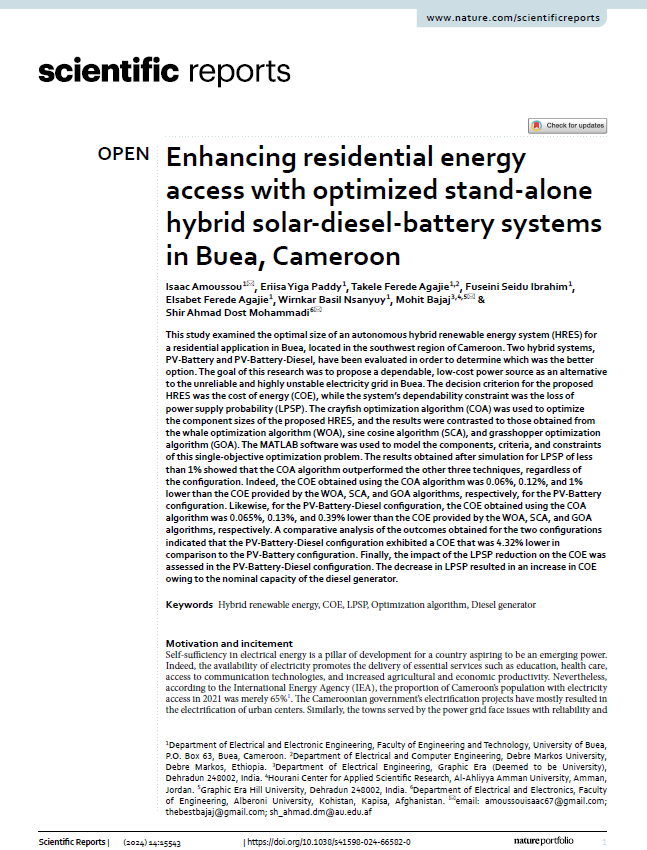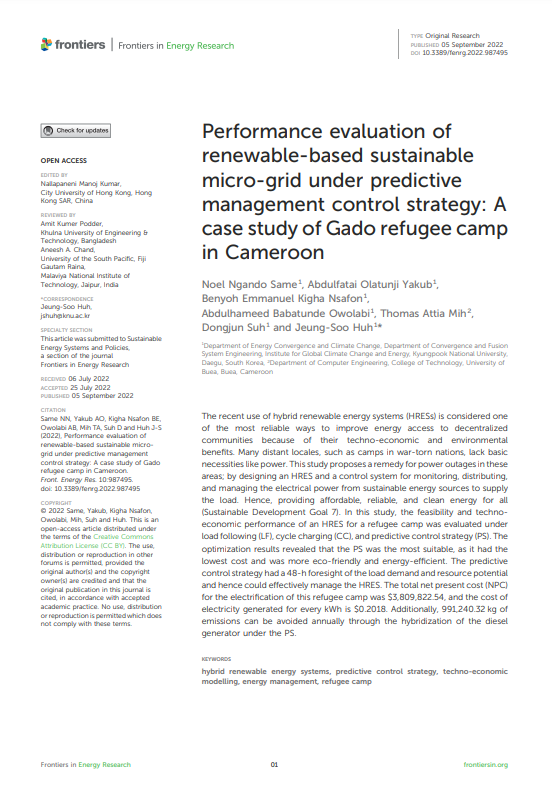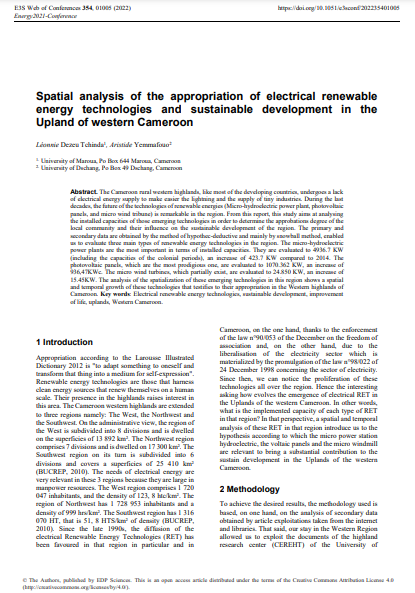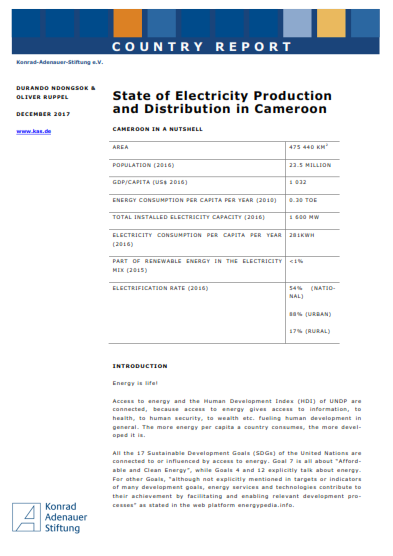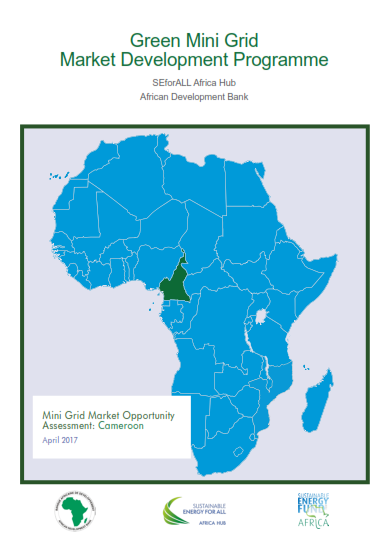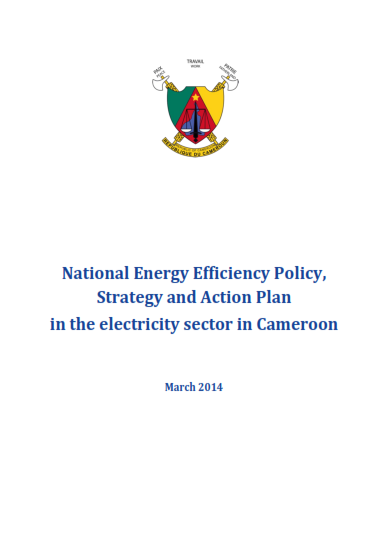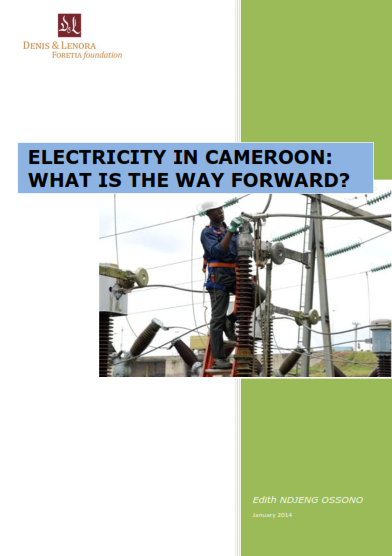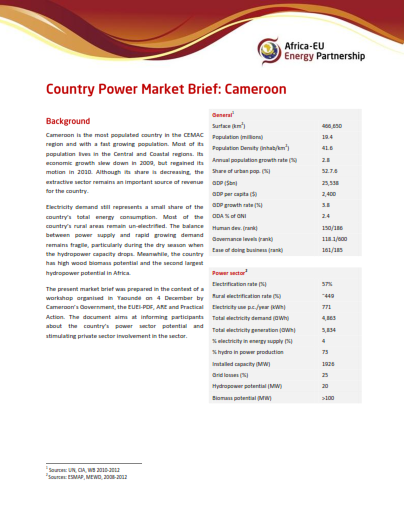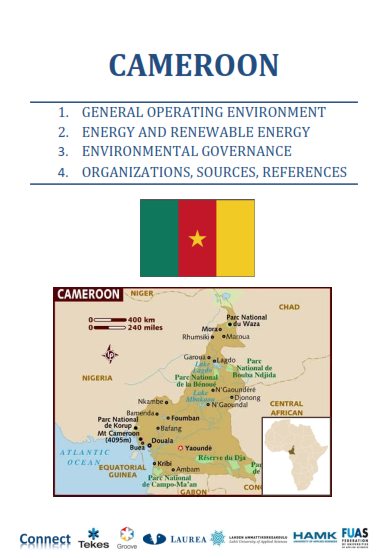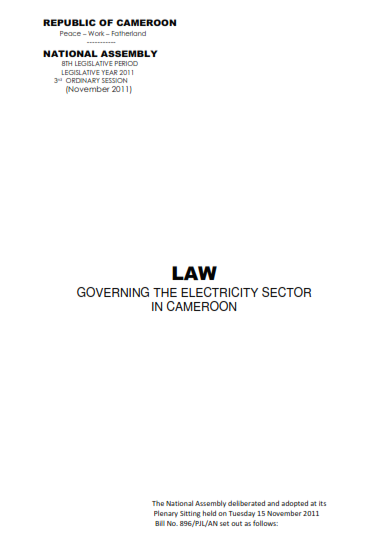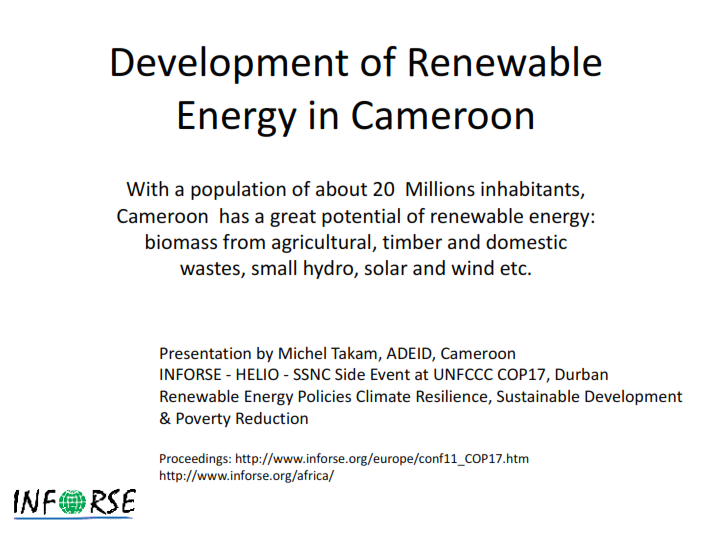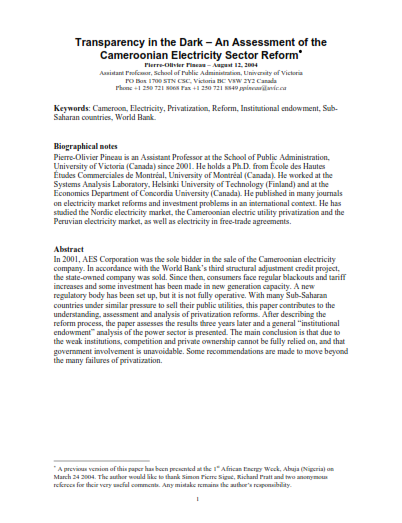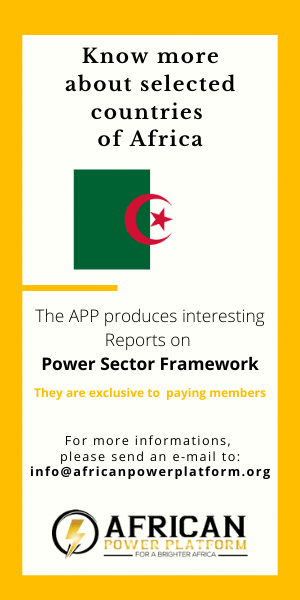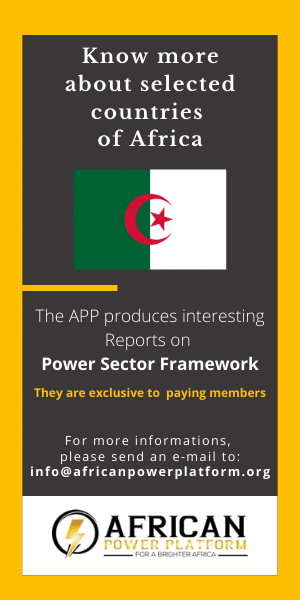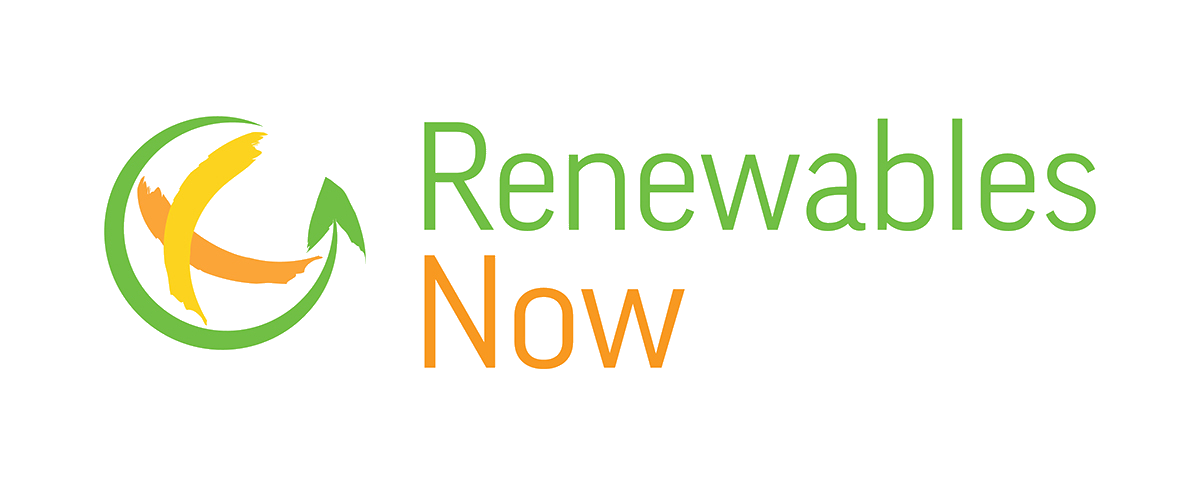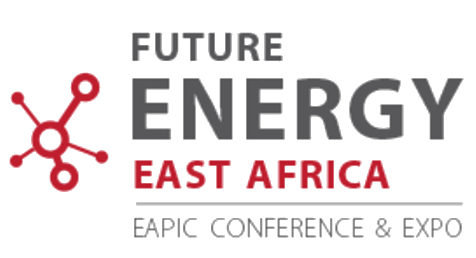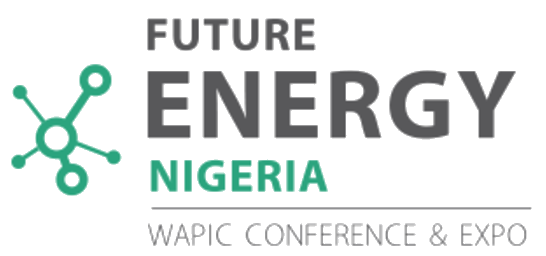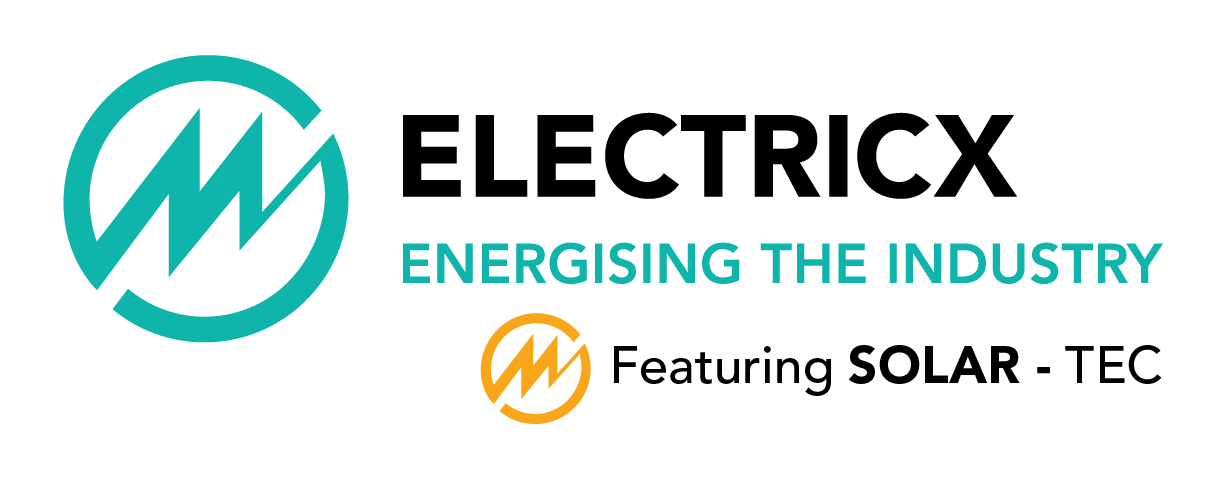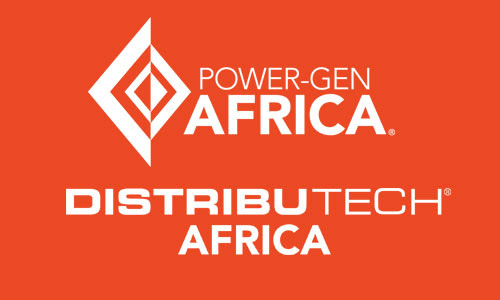We post here the relevant reports for the power sector in Cameroon. Feel free to join our efforts and share us any other you may have found. We'd be glad to add them to the list. Just send an email to This email address is being protected from spambots. You need JavaScript enabled to view it.
Publication date: 5 July 2024
Author: Nature Portfolio
Description: This study examined the optimal size of an autonomous hybrid renewable energy system (HRES) for a residential application in Buea, located in the southwest region of Cameroon. Two hybrid systems, PV-Battery and PV-Battery-Diesel, have been evaluated in order to determine which was the better option. The goal of this research was to propose a dependable, low-cost power source as an alternative to the unreliable and highly unstable electricity grid in Buea.
Download Report >>
Visit Website >>
Publication date: 5 September 2022
Author: Frontiers in Energy Research
Description: The recent use of hybrid renewable energy systems (HRESs) is considered one of the most reliable ways to improve energy access to decentralized communities because of their techno-economic and environmental benefits. Many distant locales, such as camps in war-torn nations, lack basic necessities like power. This study proposes a remedy for power outages in these areas; by designing an HRES and a control system for monitoring, distributing, and managing the electrical power from sustainable energy sources to supply the load.
Download Report >>
Visit Website >>
Publication date: 13 July 2022
Author: E3S Web of Conferences
Description: The Cameroon rural western highlands, like most of the developing countries, undergoes a lack of electrical energy supply to make easier the lightning and the supply of tiny industries. During the last decades, the future of the technologies of renewable energies (Micro-hydroelectric power plant, photovoltaic panels, and micro wind tribune) is remarkable in the region. From this report, this study aims at analysing the installed capacities of those emerging technologies in order to determine the approbations degree of the local community and their influence on the sustainable development of the region.
Download Report >>
Visit Website >>
Publication date: 2017, December
Author: Konrad-Adenauer-Stiftung
Description: Access to energy and the Human Development Index (HDI) of UNDP are connected, because access to energy gives access to information, to health, to human security, to wealth etc. fueling human development in general. The more energy per capita a country consumes, the more developed it is.
Download Report >>
Publication date: 2017, April
Author: SE4ALL
Description: This country report is one of five pilot country reports in the first phase of the Market Intelligence business line of the African Development Bank’s Green Mini-Grid Market Development Programme (MDP). The MDP programme has the ultimate objective of fostering access to electricity across Africa by promoting the development of green mini-grids where they are technically and economically a better option than the extension of the main grid. The Market Intelligence business line targets the provision of comparable, actionable data on the potential for GMGs between countries in SubSaharan Africa. This report provides an analysis for Cameroon.
Download Report >>
Publication date: 2014, March
Author: ARSEL / EUEI
Description: This report is the final report of a study that aims to produce an energy efficiency policy, strategy and action plan for the electricity sector in Cameroon. Its purpose is to support discussions with the various Cameroonian stakeholders, with a view to achieving consensus in the formalisation of the measures to be taken in the short, medium and long term in this area.
Download Report >>
Publication date: 2014, January
Author: Denis & Lenora
Description: Cameroon has significant resources to the development of hydropower. Its economically exploitable hydropower potential is estimated at 20,000 MW, mainly available in the Sanaga Basin (MINEPAT nd), the country could produce much more energy if these resources were appropriately exploited.
Download Report >>
Publication date: 2014
Author: Africa-EU Energy Partnership
Description: Cameroon is the most populated country in the CEMAC region and with a fast growing population. Most of its population lives in the Central and Coastal regions. Its economic growth slew down in 2009, but regained its motion in 2010. Although its share is decreasing, the extractive sector remains an important source of revenue for the country.
Download Report >>
Publication date: 2012
Author: LAUREA
Description: Cameroon is located in the western part of Central Africa region. It is positioned on the Gulf of Guinea and its neighbouring countries are Nigeria, Chad, Central African Republic, Republic of Congo, Gabon and Equatorial Guinea (CIA).
Download Report >>
Publication date: 2011, November
Author: Cameroon Gov
Description: This law governs the electricity sector with a view to ensuring its modernization and development. It shall apply to the generation from any primary or secondary energy source, the transmission, distribution, supply, importation, exportation and sale of electricity by any corporate entity or individual in Cameroon.
Download Report >>
Publication date: 2011, November
Author: INFORSE
Description: With a population of about 20 Millions inhabitants, Cameroon has a great potential of renewable energy: biomass from agricultural, timber and domestic wastes, small hydro, solar and wind etc.
Download Report >>
Publication date: 2009, December
Author: AfDB
Description: The Project to Strengthen and Extend Cameroon's Electricity Transmission and Distribution Networks is an investment project covering eight of the country's ten regions. It stems from Cameroon's Rural Electrification Master Plan (PDER), the studies on which were financed by the Bank, and the World Bank - funded National Energy Action Plan for Poverty Reduction (PANERP).
Download Report >>
Publication date: 2004, August
Author: University of Victoria
Description: The major challenge for Cameroon is to achieve strong and sustainable economic growth, whose fruit is evenly distributed to the population. To achieve this, the country needs to diversify its exports, largely based on oil, and eliminate a number of constraints; the most important being the poor energy services and basic infrastructure, governance, poor capacity, and an unfavorable environment for the private sector. The lifting of these constraints must take place in a stable and quality macro-economic environment.
Download Report >>





